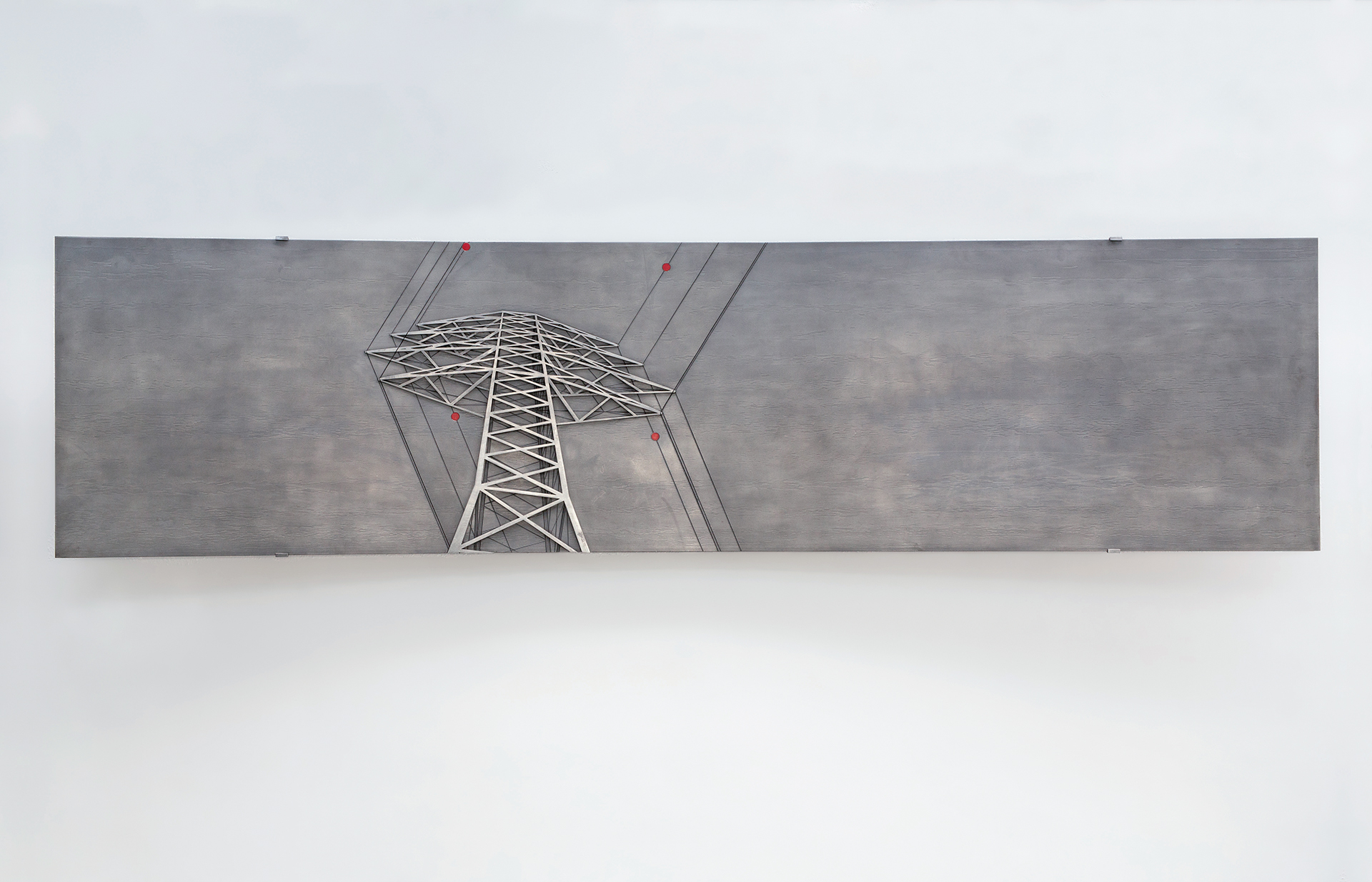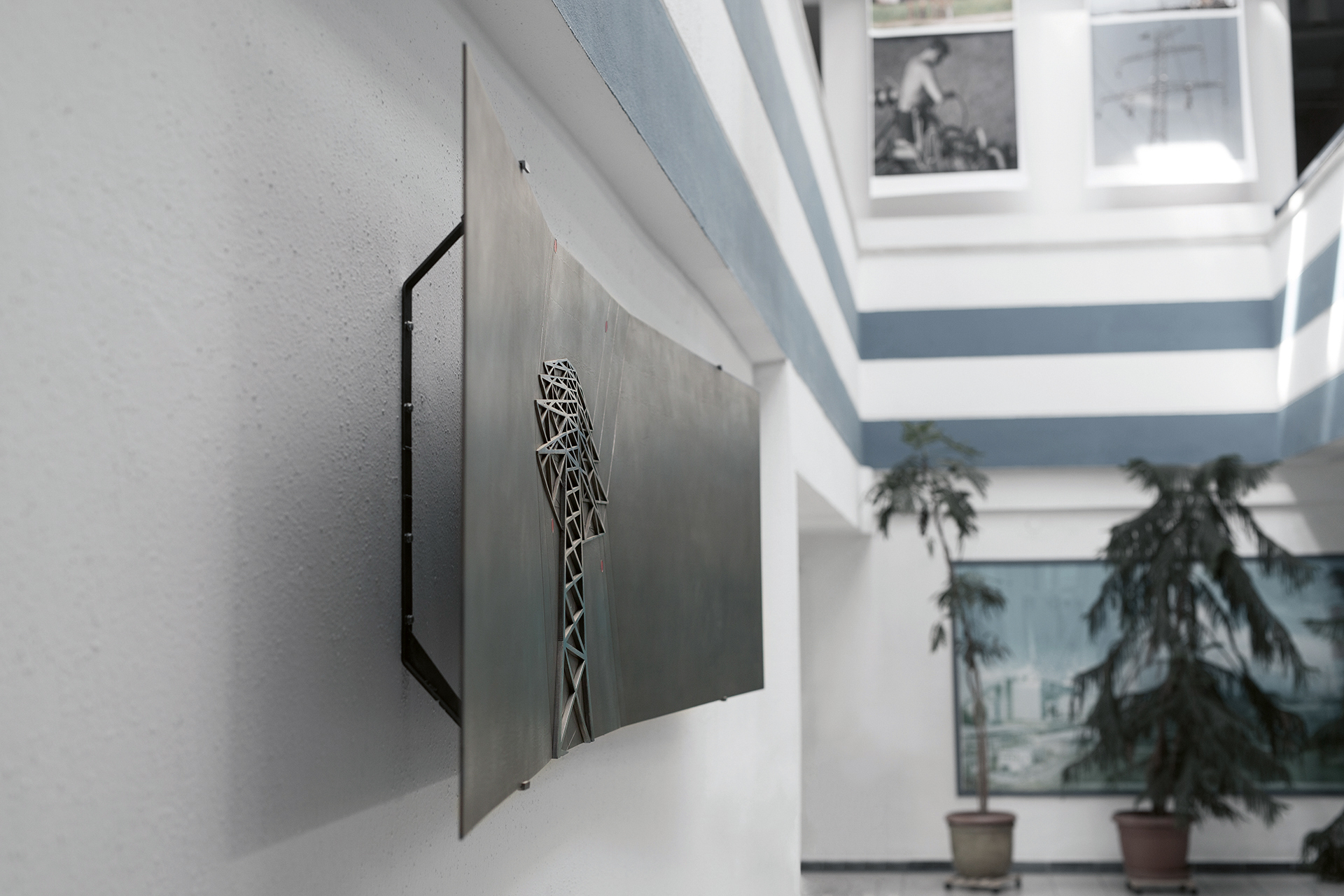Close Angle II.
YEAR: 2013
SIZE: 300×75×23cm
TECHNIQUE: Graven, painted corten steel sheet
The aesthetic of the pylon
“Marcell Németh’s painstaking method, the greyish basic tone of his preferred material, the repetition of the purposefully chosen leitmotifs (pylons, motorways), presuppose a creative process in which the artist analyses each and every element of the view, searching for the most adequate artistic representation. This is why Németh’s compositions incorporate such characteristics of the material as the play of forces on the large surface of the steel plate, or its bending under the impact of engraving (Drop-rings, 2013).
While around 2010 he studied interiors (mostly underground stations) from complex perspectives (Inner Space VI, 2011), more recent series employ the space-distorting construction principles of the fisheye lens as they build extreme wide-angled, highly decomposed views of suburban scenes, such as the overpass of Transitional Space III (2012), which recedes into infinity, or the winding motorway of Transitional Space II (2012), viewed from the passenger’s position. This latter work includes a new constituent, a colouring that is responsible for a strong highlight and is restricted to one or two elements. The traffic sign in the foreground of the composition marks an emphatic point, secures the viewer’s attention, and guides their gaze through the taut structure of the picture space, which is drawn up along vertical and horizontal axes. Applied sparingly, the colours on the monotonous grey surfaces of the steel sheets lend a distinguished role and a certain character to the nondescript smokestacks or traffic signs (Transitional Space I; Close Angle III, 2013).
Electricity pylons and the lines through which the city’s lifeblood circulates form the recurring, symbolic motifs of the works Németh made between 2011–2014. Presented from a drastic worm’s-eye view, the intriguing structure of the pylon heads spreads against the metallic, swirling, homogeneous surface of the sky. While it is an exciting technical challenge to cut the pylon, shortened from an unusual perspective, out of steel, it is an equally compelling problem to invest this object, which has a striking aesthetic, with a conceptual content. The simplicity of Németh’s concept is matched by its effectiveness: the act of choice turns the typical into individual, and while it highlights the aesthetic of the pylon, it calls attention to the triviality of the object, its replaceability.”
Contemporary Art From Hungary- 17 / 2018
Noémi Szabó

